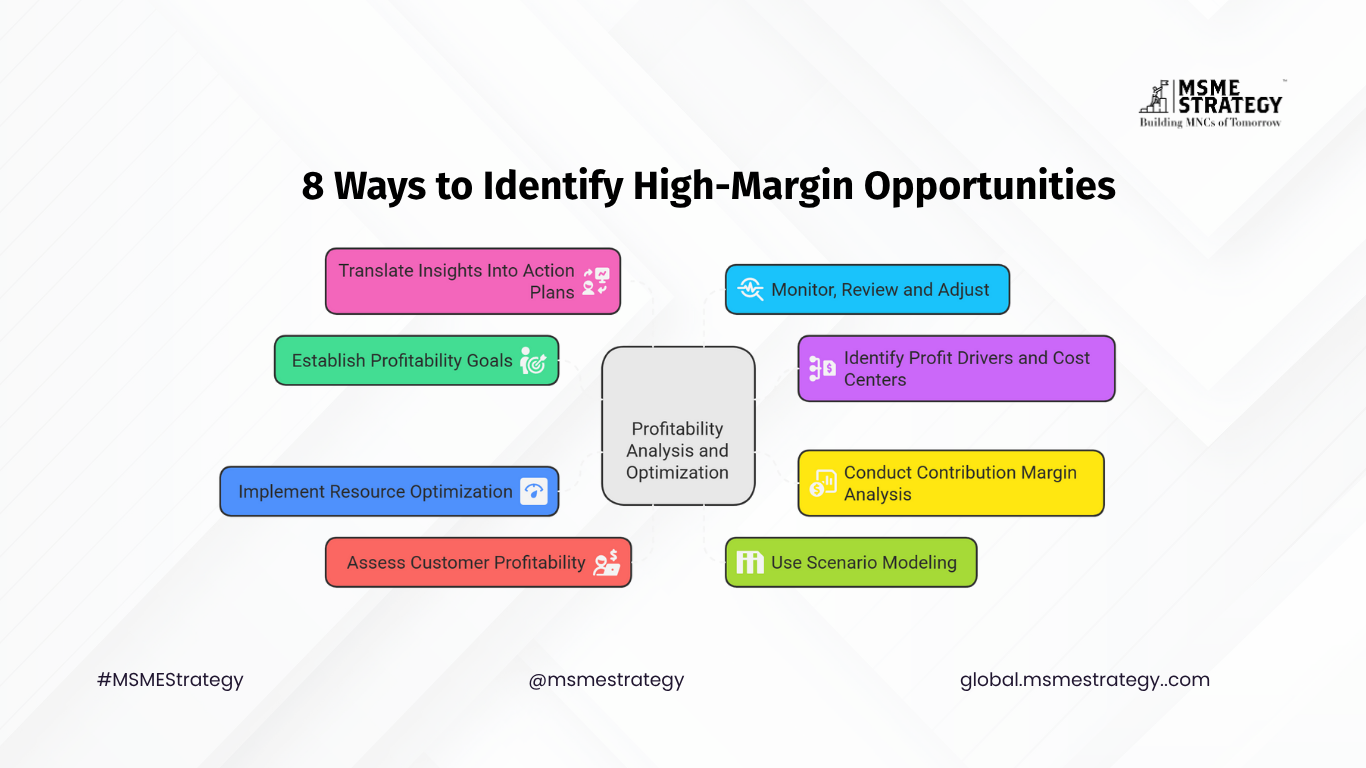In a volatile global market where efficiency often trumps expansion, profitability analysis has emerged as a strategic imperative for SMEs. Seasoned business leaders understand that profit isn’t just about revenue—it’s about resource optimization, cost intelligence, and smart decision-making.
Whether you operate in manufacturing, services, or digital economies, a data-driven profitability analysis can help you uncover inefficiencies, rationalize product lines, and shift focus to high-margin opportunities.
Here’s a step-by-step guide to profitability analysis tailored for small and medium enterprises (SMEs), with a global perspective.
Step 1: Establish Profitability Goals Aligned with Strategy
Start with clarity. Are you optimizing for short-term gains, preparing for scaling, or improving investor readiness? Set clear financial KPIs such as Gross Margin, Net Profit Margin, Return on Capital Employed (ROCE), and Customer Lifetime Value (CLV). Align them with your broader strategy—growth, consolidation, or diversification.
Step 2: Identify Profit Drivers and Cost Centers
Break down your revenue and cost streams by:
- Product/Service Line
- Customer Segments
- Geographies or Channels
- Time Periods (Quarterly, Seasonally, Annually)
Use Activity-Based Costing (ABC) to assign indirect costs more accurately and understand what’s really consuming resources.
Step 3: Conduct a Contribution Margin Analysis
Evaluate the profitability of each product or service offering by calculating its contribution margin:
Contribution Margin = Revenue – Variable Costs
This shows what remains to cover fixed costs and generate profit. High-revenue but low-margin offerings may need pruning or repositioning.
Step 4: Implement Resource Optimization
Use the insights to optimize:
- Workforce Allocation: Are your key talent and hours focused on high-yield projects?
- Inventory Management: Eliminate underperforming SKUs; increase turnover rates.
- Technology & Automation: Adopt cost-efficient digital tools for operations, sales, and customer service.
Step 5: Assess Customer Profitability
Not all customers are equally profitable. Calculate:
- Acquisition cost
- Support/resource burden
- Repeat business or upselling potential
Focus your marketing and relationship-building efforts on high-LTV clients. Let go of clients who consistently yield negative margins.
Step 6: Use Scenario Modeling
Simulate best-case, base-case, and worst-case scenarios for new investments, pricing strategies, and cost-cutting decisions. This guards against risk and prepares you for quick pivots in strategy.
Step 7: Translate Insights Into Action Plans
Profitability analysis without execution is a missed opportunity. Create clear action plans with assigned ownership, timelines, and measurable outcomes. Communicate these across teams to ensure alignment.
Step 8: Monitor, Review and Adjust
Make profitability analysis a recurring activity, not a one-time project. Use dashboards, quarterly reviews, and regular team debriefs to stay responsive and agile.
At MSME Strategy Consultants (global.msmestrategy.com), our experienced consultants are ready to help SMEs navigate profitability analysis with tailored tools, benchmarks, and execution strategies that fit your unique context.
#GlobalMSMEStrategy #ProfitabilityAnalysis #SMEGrowth #ResourceOptimization #SMEFinance #HighMarginStrategy #BusinessEfficiency #MSMEStrategy






